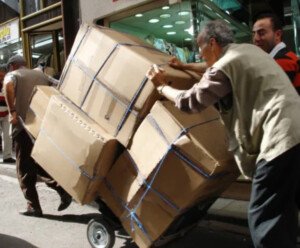
Those who move furniture or other heavy items for a living need to do structured strength training workouts. This will help prevent injury.
How many movers have told someone, “My back is shot from all the moving I’ve done,” or, “Both my knees are shot from my job,” etc.?
I’ve heard it more than once.
Moving furniture, including pianos and refrigerators, should never be thought of as a replacement for strategic, structured and systematic weight workouts.
It’s logical to assume that most furniture movers believe they don’t need to “work out,” since they do a lot of lifting, hoisting, hauling, pulling and pushing on the job all day long.
Most of the furniture movers I’ve seen throughout the years do not appear to “work out.”
They look average, sometimes even on the scrawny side. Some have been older as well.
Aren’t professional movers already strong from their job?
How do men with average builds, some even smokers, manage to move such heavy loads of weight, including up flights of stairs?
It’s all about leverage and technique, with the help of straps that wrap around the upper body that allow the mover to use his legs for most of the movement. The addition of a second man helps tremendously.
This is all how a man in his 60s, with a build of a typical 60-something man — who’d told me he had three brain aneurysms that were scheduled for treatment in the near future — managed to carry my upright piano through a door, up seven steps, make a tight turn with it into the living room, then set it down. His son had the other end of the piano.
The use of lifting techniques plus experience enable men, including older, with average builds to move bulky, heavy pieces of furniture that seem impossible to move.
Maybe you’ve seen movers who look like they seriously train at a gym.
I have, too. It’s not surprising that a young man who pumps heavy iron, who needs a job, may be drawn to a job moving furniture.
When my parents moved into a new home one day, I witnessed the furniture-moving operation. One of the young men had a bodybuilder’s physique.
We got to talking. I flat out said, “I bet all that weightlifting you do really helps you on the job.”
He most definitely agreed.
Reasons Professional Movers Need to Strength Train
Furniture movers should do formal weightlifting workouts for more than one reason.
First of all, it WILL help them on the job. It will make things easier to move and manipulate through space, even though leverage and technique are the primary tools.
Next, strength training will significantly reduce the risk of injury!
A systematic strength training program will help guard against injuries to the low back, knees and shoulders.
Strength training will help offset the non-neutral spinal alignment that occurs during the moving of furniture.
When movers are on the job, the focus isn’t on proper biomechanics the way it is in a gym workout. The focus is on simply getting the job done as fast as possible.
This doesn’t always translate to “good form.” Sometimes, the nature of the object being hoisted about, and where it’s going (e.g., up a winding staircase and around a tight corner), give rise to “bad form.”
Having moved many times, I’ve seen this firsthand.
A structured weightlifting regimen will help reset the body as well as prepare it for future operations in which there’s less-than-desirable form.
Best Exercises for a Professional Mover
Deadlift. This whole-body exercise trains the body to pick something heavy off the ground – exactly what a mover does. The entire posterior chain – the muscles on your backside – are targeted.
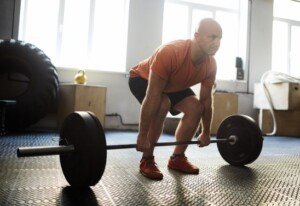
Deadlift start position. Freepik.com/pressfoto
Pick a barbell off the floor, arms straight, and rise to a fully erect position, then set it back on the floor with control.
NEVER let your back become rounded. Shoulders shoule ALWAYS be higher than your hips!
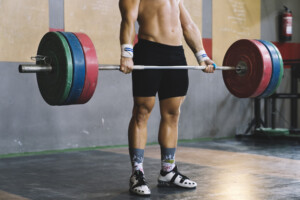
Completion of the deadlift. Set back down WITH CONTROL. Freepik.com
Squat. There are different varieties of squats, but the back squat (barbell against the top of the back) allows for the most weight lifted.
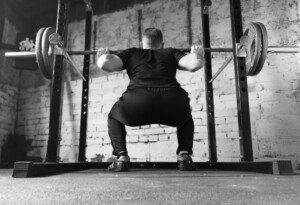
Back squat. Never allow your back to round.
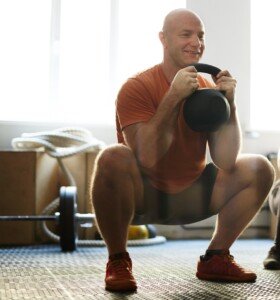
Kettlebell squat. Shutterstock/Pressmaster
Any squatting against resistance will seriously carry over to what movers do on the job.
Standing barbell overhead press. This strengthens the body’s ability to lift overhead or retrieve things from overhead, while at the same time, strengthening the low back.
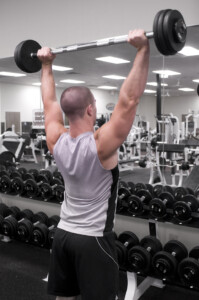
Overhead press
Farmer’s walk. This improves the ability to walk around while carrying heavy things in the hands with straight or slightly bent arms.

Farmer’s walk. Sgt. 1st Class Joseph Tolliver/Wikimedia Commons
Simply hold a heavy weight (dumbbell, kettlebell, weight plate) in each hand, arms straight or slightly bent at your sides, and walk around for a minute.
If you could go longer than a minute, use heavier weight.
Tire flip. The whole body gets worked; kind of like a squat-deadlift-chest press hybrid.
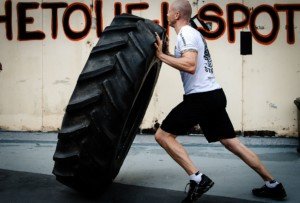
Tire flip
Bench press. Moving also recruits chest muscles, and the bench press will have this covered.

Bench press
Standing biceps curls. Though this is an isolation move, sometimes the mover must use his biceps in a rather isolated fashion.
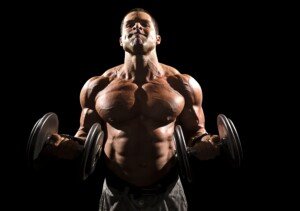
Biceps curls. Mark McElroy
Kettlebell swing. The KB swing engages the legs, low back/core and shoulders all at the same time.
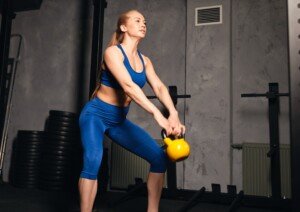
Kettlebell swing. Bring arms up to parallel to the floor. Shutterstock/The Faces
The motions of all these exercises are similar enough to significantly carry over to a mover’s job in the form of reduced injury, increased efficiency and improved stamina.
NOTE: You do NOT have to bulk up or develop the physique of a bodybuilder in order to acquire more strength and more resistance to work-related injuries.








































